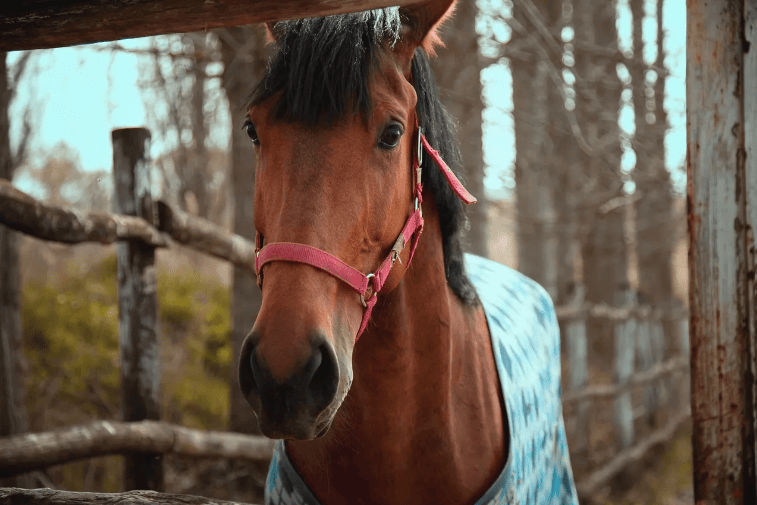In 2022, organizations that provided direct placement services reported accommodating 65% of requests.

Press Release
Data collected from reports of equine rescues and sanctuaries across the country are shining a light on how hundreds, maybe even thousands, of horses find themselves in a rescue. The Equine Welfare Data Collective (EWDC), a program sponsored by the United Horse Coalition and the American Horse Council, has released its sixth report, covering data from 2022. A report detailing the trends shown by the data collected over the last four years will be published.
Key Notes from National Study
The EWDC Report 6 shows similar intake and outcomes findings to Report 5 with most equine intakes due to owner relinquishments, while the majority of outcomes are attributed to adoptions.
- Intakes: National intakes show an increase in law enforcement confiscations (16% in 2022 compared to 8.9% in 2021), fewer equines transferred into custody from another agency (5% in 2022 compared to 11.7% in 2021) and a slight decrease in intakes due to owner relinquishments (60% in 2022 compared to 62.7% in 2021).
- Outcomes: National outcomes show a decrease in adoptions (66% in 2022 compared to 75.9% in 2021), a decrease in equines euthanized due to health reasons (12% in 2022 compared to 15% in 2021) and a notable increase in outcomes due to equines transferred to another agency (12% in 2022 compared to 3.5% in 2021).
Notably, many changes in intake and outcome numbers seem to be a result of a return to pre-COVID numbers. First-hand accounts gathered by EWDC representatives from rescues and animal control officers recounted staffing shortages during COVID, posing a challenge for these organizations in data reporting.
“The EWDC is proud to publish its sixth report, representing our fifth year of data collection and reporting,” says Kelsey Buckley, program administrator of the EWDC. “The report can allow us to better understand how the global pandemic COVID-19 affected at-risk and transitioning horses and the organizations offering custodial and non-custodial services.”
Key Notes from Regional Reports
- Most regions reported more than 50% of their intakes were due to owner relinquishments.
- Most regions reported high percentages of outcomes as adoptions. More regional-specific statistics can be found within the report.
- More regional-specific statistics can be found within the report.
Overall Conclusions
In 2022, organizations that provided direct placement services reported accommodating 65% of requests. The majority (89%) of requests accommodated were requests to rehome an equine.
Feed assistance and veterinary care assistance continue to be the most common requests for aid made to organizations that provide assistance services. Organizations also fulfilled a similar number of veterinary care requests to numbers reported in 2021 but were only able to fulfill 44% of feed assistance requests in 2022 compared to 94% of requests in 2021. It was unclear whether this decrease is due to more requests or fewer resources available.
“The United Horse Coalition’s ultimate goal is to help reduce the number of intakes nationwide by promoting Responsible Ownership and responsible rehoming options for horse owners,” says Ashley Harkins, director of the UHC. “Data showing assistance services merits a closer inspection as assistance service can act as a lifeline for owners on the brink of relinquishment. A concerning decrease in the number of feed assistance requests fulfilled is notable, but it is not yet known if this decrease is a result of increased requests or decreased supplies.”
“We understand from outreach and communications with previously reporting organizations, that global pandemic impacted submissions,” says Buckley. “But data submissions are on the rise including a promising increase in reporting on direct placement services. The EWDC plans to continue to work to increase reporting to ensure accurate and unbiased reporting in the future.”
The EWDC is currently collecting data from 2023 and is running a data drive contest through February 19. Data can be submitted all year round: http://unitedhorsecoalition.org/submit-data/
You can find out more about the EWDC and submit your nonprofits statistics for the next report, visit https://unitedhorsecoalition.org/ewdc/
For more information on the EWDC, contact Buckley at [email protected]
Contact: Kelsey Buckley
Equine Welfare Data Collective
Phone: 202-296-4031
Email: [email protected]
ABOUT THE UNITED HORSE COALITION
The United Horse Coalition is a broad alliance of equine organizations that have joined together under the American Horse Council to educate the horse industry about the issues facing horses at-risk or in transition. We seek to provide information for existing and prospective owners, breeders, sellers, and horse organizations regarding the long-term responsibilities of owning and caring for horses, as well as focusing on the opportunities available for these horses. Learn more at unitedhorsecoalition.org
About the American Horse Council
As the national association representing all segments of the horse industry in Washington, D.C., the American Horse Council works daily to represent equine interests and opportunities.
As an equestrian media outlet focused entirely on American horse sport, EQuine AMerica showcases the USA’s equestrian talent (both two-legged and four) in the disciplines of para dressage, dressage, hunters, jumpers, and eventing. We support and promote our nation’s fantastic equine events, products, services, artists, authors, science/tech, philanthropy, and nonprofits through our online magazine and social media platforms. Our mission is to offer you interesting/inspiring short and long-form content in a format that’s beautiful, readable, and relatable.






















SOCIAL